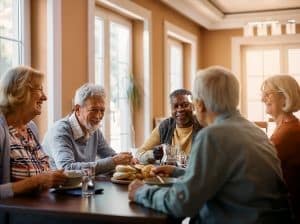
You never expect it. You choose a nursing home because you believe it’s the safest place for someone you love. A place where they’ll be cared for, where they’ll be treated with kindness and dignity. Then, one day, something feels off. Maybe it’s a bruise that wasn’t there before. Maybe they seem distant, scared, or not like themselves. Maybe their room is dirty, or they look thinner than the last time you visited.
And then it hits you: something isn’t right. To report suspected nursing home abuse, contact the authorities immediately. Reporting could save your loved one and others from further harm.
No one wants to believe their loved one is being abused. But if you even suspect it, you have to act—immediately. Waiting could mean more suffering, more pain, or worse.
Here’s what you need to do right now.
Watch for the Signs—Even the Small Ones
Not all abuse looks the same. Some people show obvious bruises or injuries. Others suffer in silence, too afraid or ashamed to speak up. Look for:
- Unexplained bruises, burns, or bedsores.
- Sudden weight loss or signs of dehydration.
- Poor hygiene, dirty clothes, or unchanged bedding.
- Fearfulness, depression, or withdrawal.
- Unusual financial transactions or missing personal items.
If your gut tells you something is wrong, listen. Don’t brush it off. Ask questions. Look your loved one in the eye. If they hesitate, if they glance at a staff member before answering, if their voice shakes—that’s a sign.
Get Them Out If They’re in Immediate Danger
If your loved one is unsafe, don’t wait. Call 911 if it’s an emergency. If you can, remove them from the facility and take them somewhere safe—a hospital, another family member’s home, anywhere they’ll be cared for. They need a doctor to examine them, not just for treatment but to document injuries. Those records could be critical later.
Document Everything—Because Proof Matters
Abuse cases aren’t always open-and-shut. The nursing home may deny everything, staff members may close ranks, and without proof, it’s your word against theirs. That’s why documentation is everything.
- Take photos of injuries, unclean conditions, or signs of neglect.
- Keep copies of medical records and doctor’s reports.
- Write down dates, times, and details of concerning incidents.
- Save financial records if you suspect exploitation.
- Speak to other residents or staff members who might have seen something.
Even small details matter. A note about how your loved one was acting on a certain day. A time-stamped photo. A bank statement showing an odd withdrawal. It all adds up.
Talk to a Personal Injury Lawyer—Because Justice Doesn’t Happen on Its Own
Filing a complaint is important, but it’s not always enough. Nursing homes have lawyers. They have corporate owners who care more about profits than people. They’ll do everything they can to avoid responsibility. You need someone who knows the law and will fight for your loved one.
A personal injury lawyer who handles nursing home abuse cases can help:
- Hold the facility accountable.
- Fight for financial compensation to cover medical bills, pain and suffering, and other damages.
- Push for policy changes to prevent future abuse.
No amount of money erases what happened. But it can help your loved one get the care they deserve—and stop the same thing from happening to someone else.
Stay Involved—Because Your Loved One Needs You More Than Ever
Even after you report the abuse and take legal action, stay present. Visit often. Drop by unexpectedly. Pay attention to how they look and act. Ask staff questions. Speak up if something feels wrong.
Abuse happens when no one is watching. So, keep watching. Keep asking. Keep fighting for your loved one.
You Can Stop This
It’s terrifying to think someone you love has been mistreated. But you don’t have to go through this alone. Take action now. Protect your loved one. Demand justice. Because no one deserves to suffer in silence.








